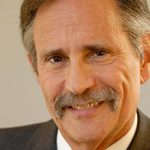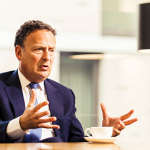One of the biggest surprises to come out of Macfarlanes lately is not that it was one of the strongest performers in the LB100 this year, but rather the significantly accelerated rate of lateral hires joining the firm, bringing an increased risk of upsetting traditionalists at the City blueblood.
With the recent re-hire of one its former lawyers, Michael Parkinson from Russell-Cooke, 71-partner Macfarlanes has made seven lateral hires in around two years, as opposed to its typical average of one per year. Managing partner Charles Martin says the firm will continue to add to this number over the next 12 months.
Now is the right time to do it. The firm posted a 12% rise in revenues to £114.2m against a 43% profit margin for 2012/13, a 7% increase in profit per lawyer to £158,000 and, considering its size, an enviable profit per equity partner figure of £985,000.
Martin says recent financial performance stems from adapting the firm’s structure to fit around the changing demand of clients, and this has necessitated strengthening its bench by essentially moving away from the traditional home-grown method. The fall-off in private equity transactional work which led to a 16% drop in turnover from £110m in 2008 to £92.4m two years later – has been offset by the diversification of Macfarlanes’ practice.
‘Since the downturn, we have made a concerted effort to re-balance our practice in a number of areas,’ Martin explains. ‘We have not given up on transactional by any means but we have shifted our focus to emphasise other areas.’
There’s little sign of the firm relinquishing its strength in corporate and private equity, with Martin and corporate partner Graham Gibb instructed alongside Wachtell, Lipton, Rosen & Katz to advise Verizon on its acquisition of Vodafone’s US business for $130bn this week.
However, Martin said the firm wanted to support momentum in certain practice areas that clients have developed a need for in the wake of the financial crisis. This meant hiring more heavyweights and drafting in some old faces.
He says: ‘We changed the strategic focus of the practice and supported that with a lateral hire because we had to – we didn’t have sufficient internal capability ourselves.’
The four strands of the business getting a boost include corporate (but specifically hedge funds); real estate; private client; and structured finance.
It is notable that in some areas the hires were made to build on existing strengths rather than develop new ones. This is particularly true of private client, a practice area that Macfarlanes had the foresight to embrace while corporate rivals were closing their departments down in the 1990s. Two of the lateral hires this summer were returnees to the private client team, Parkinson and Charles Gothard, who was the head of international private client at Speechly Bircham, also defected back to Macfarlanes in May.
Martin explains: ‘We can see real potential for that mainly internationally and need more resources to support that ambition. Therefore it was very easy to get in touch with people who trained here and ask them to come back. It’s also a less risky lateral hiring strategy.’
Real estate and construction has seen some of the biggest investment. Recent new faces to the firm included Ashurst’s former head of construction, Ann Minogue, and Shearman & Sterling real estate partner Clare Breeze in recent weeks. Their arrival follows the hire of the former head of real estate at Ashurst, Ian Nisse in autumn 2011.
‘In real estate, we had a nice practice before the downturn but it was very much focused on pure real estate work,’ says Martin. ‘It was less focused on finance and funds and complex structured work. It became clear to us that the more knockabout work was becoming commoditised so we downsized that practice area with the aim of rebuilding it with a focus that played more to our firmwide strengths.’
The hire of Breeze echoes that of Akin Gump London investment funds partner Simon Thomas in February, as Macfarlanes managed to reverse the trend of large US firms recruiting City partners as they try to enhance their UK offering. Thomas came in following the hire of all nine City employees of hedge fund firm D Harris Co International last year.
The recent spate of lateral hires at Macfarlanes can be traced back to the hire of experienced finance partner Rachel Kelly from Clifford Chance in June 2011. Kelly was brought in to develop the firm’s debt capital markets practice because, Martin simply explains, ‘you can’t grow that organically.’
But despite the fact the firm has seen an unusually large number of new partners join over the last two years, Martin has few concerns that this recruitment drive could upset the balance of the firm’s collegiate partnership culture and that it will be difficult to bed down new partners and make them adjust to the Macfarlanes way.
‘Is there an issue there? Yes of course. We try to emphasise culture through the lateral recruitment process. But by and large, we found good lateral partners improve the gene pool because they bring in fresh outside thinking and remind the home team what the huge benefits of being at a place like this are: we are a real partnership and that is pretty special.’
In such circumstances, it seems unlikely that the arrival of a number costly new faces will unsettle the firm’s existing 50 equity partners too much, although the same was said of Berwin Leighton Paisner during its rapid ascent in the run-up to the collapse of Lehman. While sticking its neck out was necessary, the firm will need to ensure impressively high profitability levels are steadfastly maintained – and the flexibility offered by the absence of a lockstep in its remuneration system will inevitably help that.
sarah.downey@legalease.co.uk











